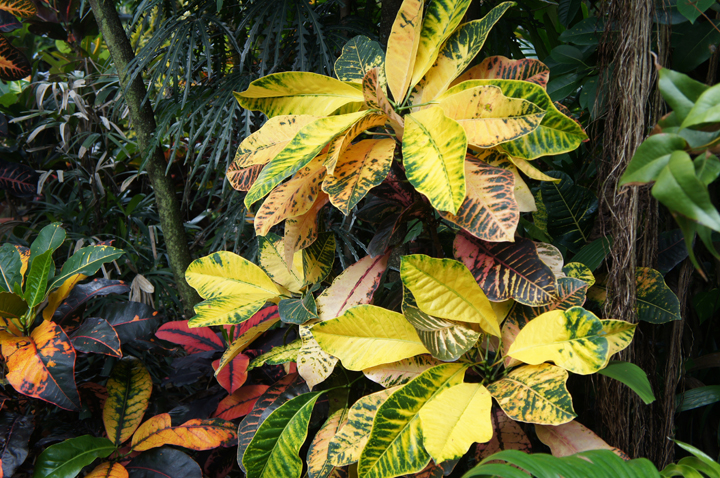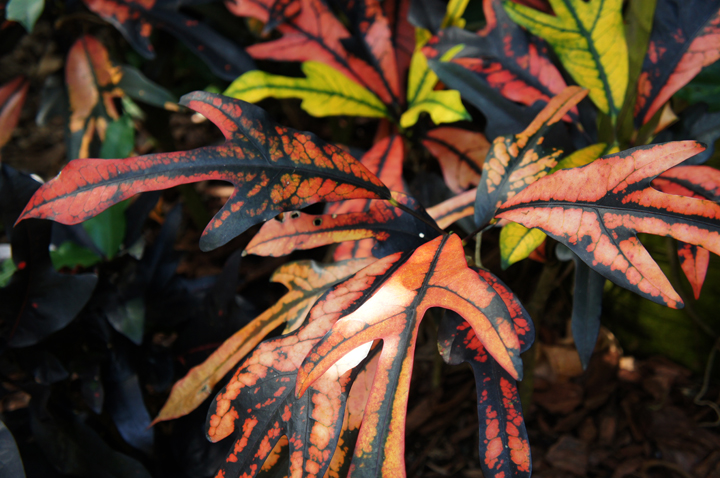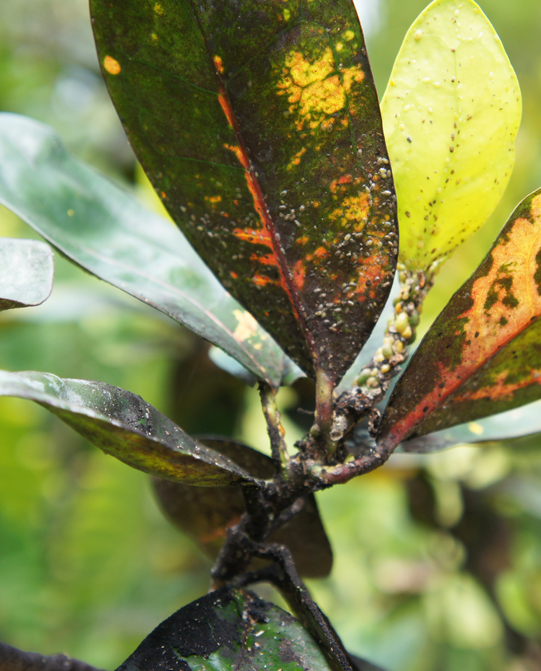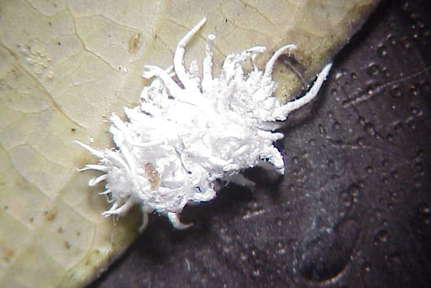Crotons in the spotlight

 |
| Codiaeum variegatum 'Polychrome'. |
Croton lovers gathered at Flamingo Gardens in Davie on Sunday, where executive director Stan Wood led them through the croton collection and then gave them a peek at a collection around his home in the back of the property. The Croton Society disbanded two years ago, but from time to time, loyalists will suggest touring a garden that features their favorite shrub.
Jeff Searle, of Searle Brothers Nursery in Southwest Ranches, not only loves palms but he’s also a croton fancier and a great auctioneer. Almost everyone who came to the croton tour — and they came from St. Petersburg, Ft. Myers, Palm Beach County as well as the Florida Keys in addition to the Broward and Miami-Dade – brought crotons to sell. The same crowd bought all of the crotons auctioned. Highest price for the day was $127. Milky Way,
 |
| Orange and red predominate here. |
brought in $93. Some plants were give-aways at $1, $3 or $5, but most were bid up to $35 and $45. Oldies but goodies included William Craig, with predominantly orange coloration; Dr. Frank Brown; Prince of Orange, with orange and red markings over green and a red central vein; Irene Kingsley; General Marshall, Her Highness and William Craig.
Orange is a color that appears in many new crotons (Codiaeum variegatum), but the delicate pinks, such as that found in Madam Butterfly and Helen Edge, are just as lovely. Searle declared that among the auction plants, a strap-leaf called Veitchii is one of the fastest growing and Claudia Lorraine is great for keeping its color in the shade.
In the Garden’s collection, croton scale is quite visibly affecting the plants. The scale is betrayed by
 |
| Croton scale. |
sooty mold, a mold that grows on the excrement of the insects. In addition to crotons, the scale, which arrived in the Keys in 2008, feeds on more than 50 plants: avocado, carambola, mango, fire bush, paradise tree, wild lime, Bahama coffee, Jamaica caper and many other trees and shrubs. (Prompting one croton lover to wonder why the name picks on crotons only.)
Stan Wood uses oil sprays to fight the scale. Also enlisted in the battle is the mealybug destroyer, a ladybug. The larvae look like giant white mealybugs with lots of legs; the adults are black ladybeetles with rust colored head shields. Mealybug destroyer can be ordered online. Its voracious appetite occurs in the larval and adult form. A predatory wasp also kills the scale. Horticultural oils, which must be applied three times, one week apart, also work.
 |
| Mealybug destroyer. |
What to avoid: neonictinoids, a class of systemic chemicals that readily kills bees. The chemical imidacloprid is one of these. On Monday, the European Commission imposed a temporary and partial ban on neonictinoids, saying this class of chemicals posed “an acute risk to honeybees.” The New York Times reported earlier this month that a coalition of beekeepers and environmental and consumer groups has sued the EPA for conditionally approving some of them.
From the Natural Resources Defence Council is this about pyrethroids:
Pyrethroids are toxic to humans and dogs, and they can be particularly lethal to cats, bees, and fish and other water-dwelling creatures. In humans, the chemicals can harm the nervous system, and high amounts can cause headache, difficulty breathing, nausea, and vomiting. The Environmental Protection Agency (EPA) has found that one member of the pyrethroid class, permethrin, is “likely to be carcinogenic to humans.”
The chemicals kill insects by blocking the transmission of messages in the nervous system. The human nervous system is less susceptible to these chemicals both because of our larger size and because humans and many other mammals have detox mechanisms to help rid the body of these chemicals. However, recent studies indicate that prenatal and infant exposure may lead to cognitive and developmental problems later on. Although dogs are able to detoxify these chemicals, cats are more susceptible and can suffer tremors, twitching, convulsions, and death if owners misuse pyrethroid-containing products.
